7 Easy Ways to Check .NET Framework Version in 2025

The other day, I wanted to install a new app and stumbled upon several versions—some requiring the .NET Framework. That left me wondering: What .NET Framework version do I have?
Turns out, it’s pretty easy to find out, and I’ll show you a few ways in which you can do it.
Besides helping you run compatible apps, knowing your .NET version can also come in handy when troubleshooting errors, developing software, or keeping your system secure and up to date.
Here’s how you check:
- Use PowerShell
- Checking Manually Through Windows Features
- Use .NET Version Detector
- Try NET Version Check
- Use the Registry Editor
- Use the Command Prompt
- Check Using Visual Studio
How to Detect .net Version
1. Use PowerShell to Detect .NET Versions
If you’re comfortable using PowerShell, here’s a simple command to list installed .NET Framework versions:
gci 'HKLM:\SOFTWARE\Microsoft\NET Framework Setup\NDP' -recurse | gp -name Version -EA 0 | where { $_.PSChildName -match '^(?!S)\p{L}'} | select PSChildName, Version
This command will show you a basic version list, but it won’t detect versions 1.0 or 1.1 and doesn’t display service pack info.
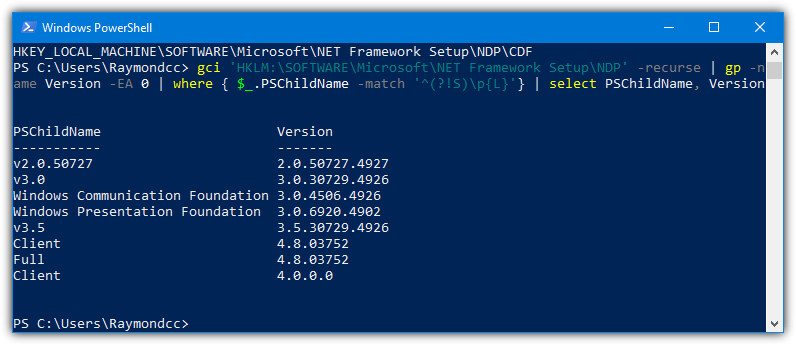
If you want something more user-friendly, try using a ready-made PowerShell script that clearly displays all versions, from .NET 1.0 to 4.8.
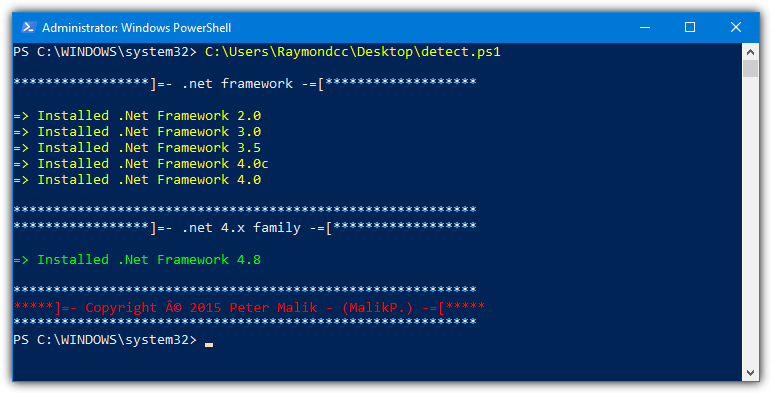
Download .NET Framework Installed Versions Getter
2. Checking Manually Through Windows Features
You can manually check the installed versions of Microsoft .NET Framework in a few ways.
One method is by going to “Programs and Features” or Add and Remove Programs in the Control Panel. However, this method might not always be accurate, as uninstall entries could be removed from the registry, or old versions might be left over. Additionally, built-in versions of .NET that come with the OS won’t show here.
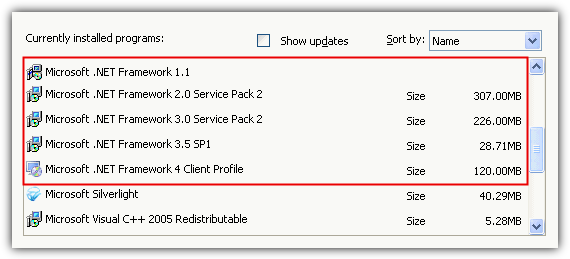
Another manual way is by checking the folders where the .NET program files are stored. These folders are usually found in C:\Windows\Microsoft.NET\Framework and C:\Windows\Microsoft.NET\Framework64 for 64-bit systems. Hovering over the folders shows their size (we used Free Commander below to check sizes easily).
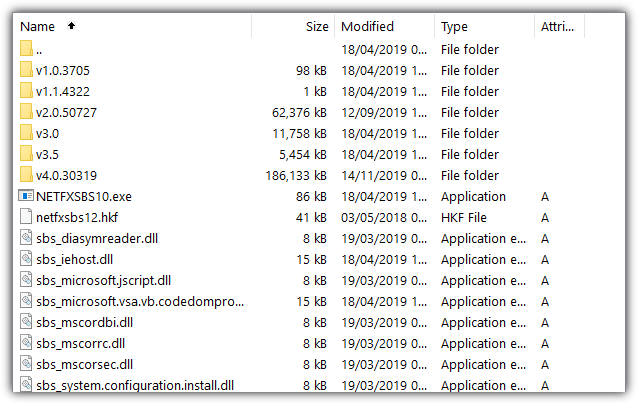
The folder for version 1.0 and 1.1 might be empty, meaning they aren’t installed. The v4.0.30319 folder can be tricky because it could contain any .NET 4 version from 4.0 to 4.8. To find the exact version, open the folder and hover over a DLL or executable to see its info tip with the installed version.
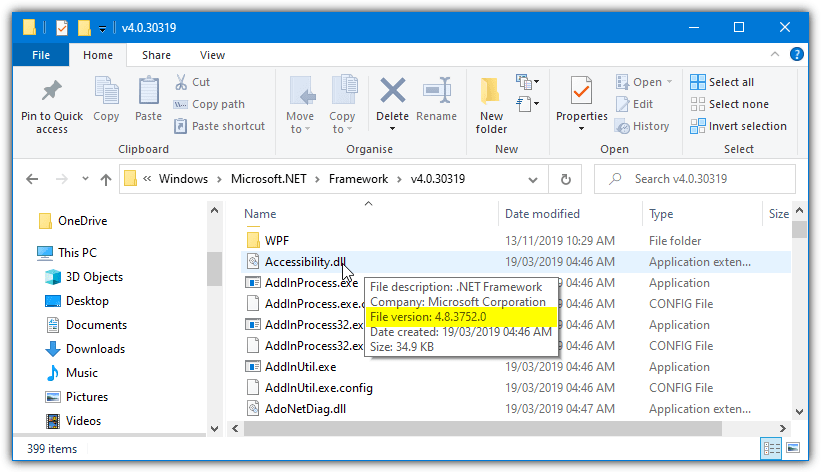
While this method isn’t the most precise, it gives you a rough idea of what .NET versions are installed using just Windows File Explorer.
3. Use .NET Version Detector
ASoft .NET Version Detector is a small and lightweight portable tool that shows all the different versions of the .NET Framework installed on your machine. If a version isn’t installed, the program provides easy links to download the missing version from Microsoft’s website, as well as the Software Development Kit (SDK) for each version.
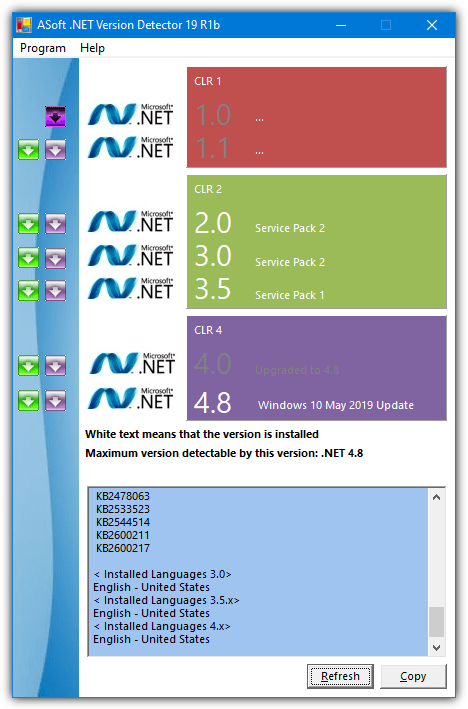
The tool shows installed versions with white text. You can click the logo next to each version to open its install directory. The log box at the bottom displays the versions, updates, and their folder locations, including 32bit/64bit. You can copy all this information to your clipboard by using the copy button.
To see which versions are standard for each operating system, go to Help > .NET Version History. ASoft .NET Version Detector checks versions 1.0 to 4.8 and works on Windows 2000 and later.
Download .NET Version Detector
4. Try NET Version Check
Though a bit outdated, NET Version Check is still effective. When tested, it detected the latest .NET Framework 4.8. Make sure to run it as Administrator, even if you already have admin rights, or it won’t show the version numbers.
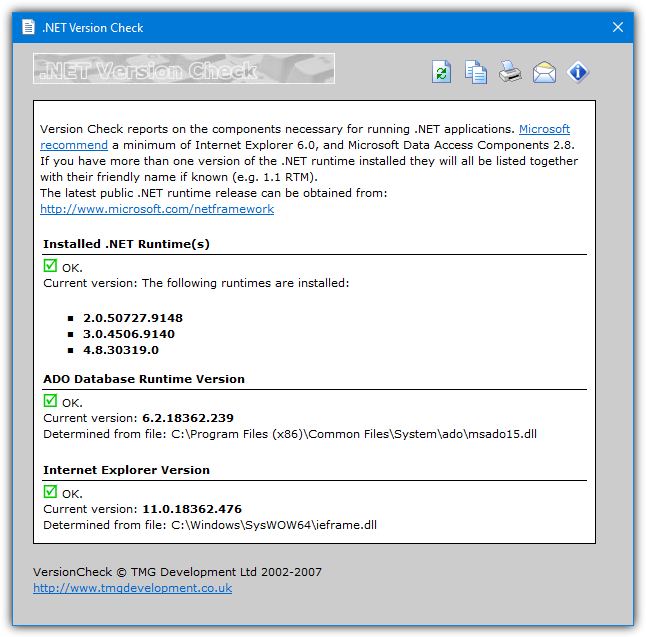
This tool also checks the version of Internet Explorer, which can be useful for older systems. It offers options to copy the info to the clipboard, print it, or email it. Inside the zip file, there’s a command-line version that can be used in batch files and doesn’t require administrative privileges.
The GUI and command-line versions provide a version number, which might not be as easy to read. However, it still gives you useful info for troubleshooting and identifying installed versions.
5. Use the Registry Editor
You can check the installed .NET versions through the Windows registry. This method can show you the exact version numbers of the installed frameworks.
To do this:
- Press Win + R, type regedit, and press Enter.
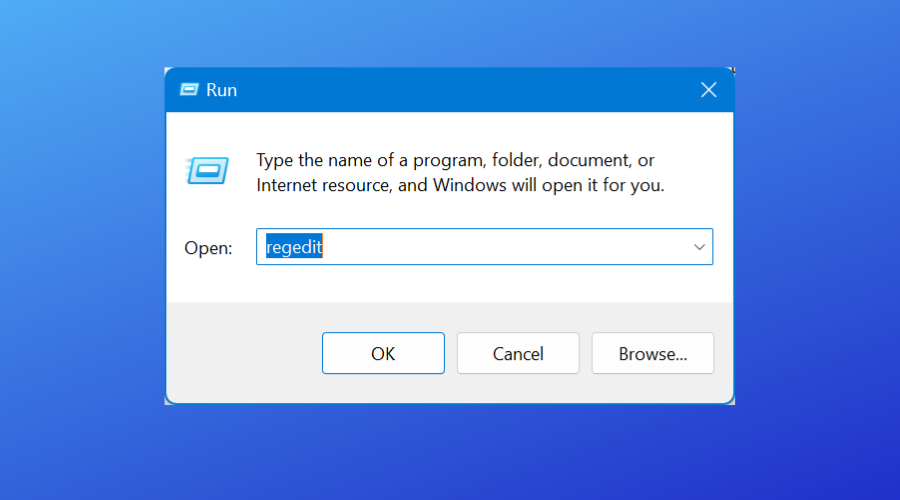
- Navigate to the following path: HKEY_LOCAL_MACHINE\SOFTWARE\Microsoft\NET Framework Setup\NDP
- Under this registry key, you’ll find subkeys for each version of .NET installed on your system. For example, v4 for .NET 4.x or v3.5 for .NET 3.5.
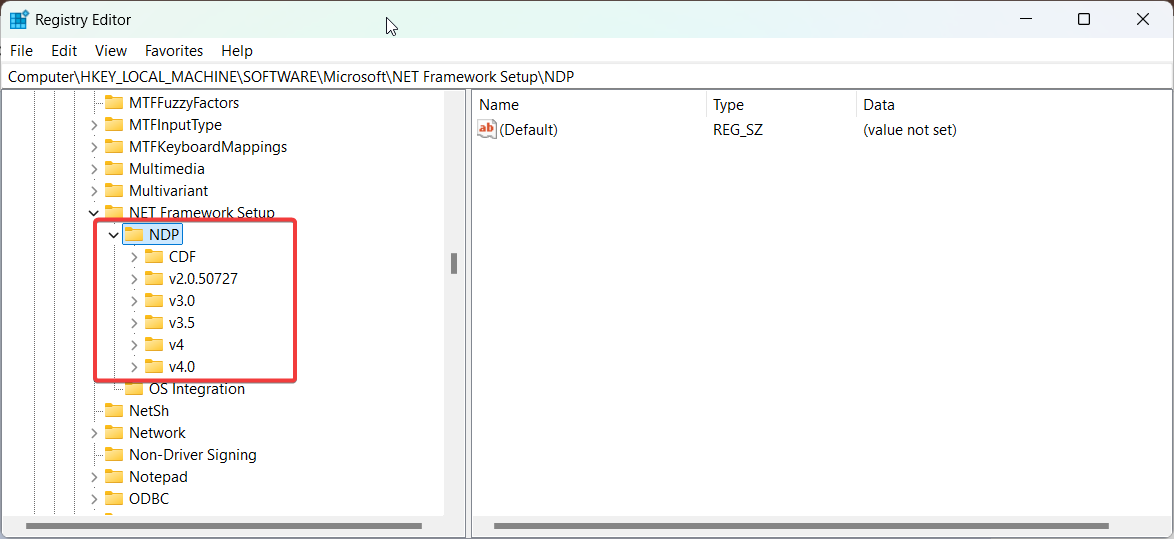
This method requires caution since making changes to the registry can cause system issues. Only read the information without making any changes.
6. Use the Command Prompt
If you’re comfortable with command-line tools, you can use the Command Prompt to check for installed .NET versions:
- Open Command Prompt with Admin privileges.
- Type the following command: dir /b /ad C:\Windows\Microsoft.NET\Framework This will list all directories corresponding to installed versions of .NET Framework.
- If you have a 64-bit system, use: dir /b /ad C:\Windows\Microsoft.NET\Framework64
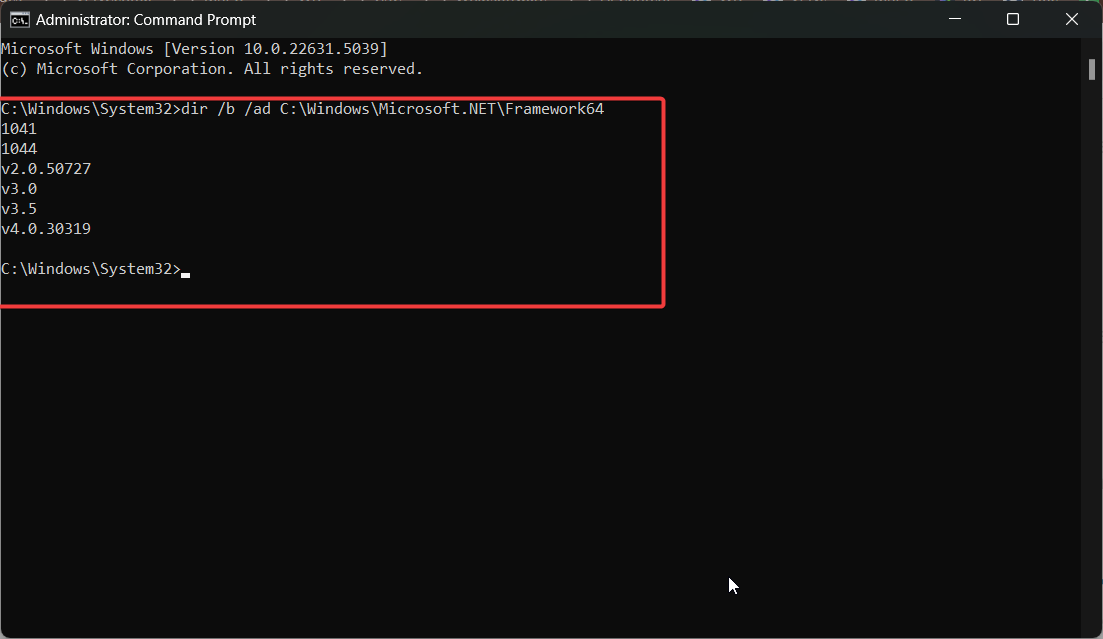
This method is quick but only shows the folders associated with installed versions, so it’s less detailed compared to other methods.
7. Check Using Visual Studio
If you have Visual Studio installed, it also offers a way to check which .NET versions are available on your system:
- Open Visual Studio.
- Go to Tools > Options.
- Navigate to Projects and Solutions.
- Create a new project.
- You’ll see the installed versions of .NET Framework and .NET Core.
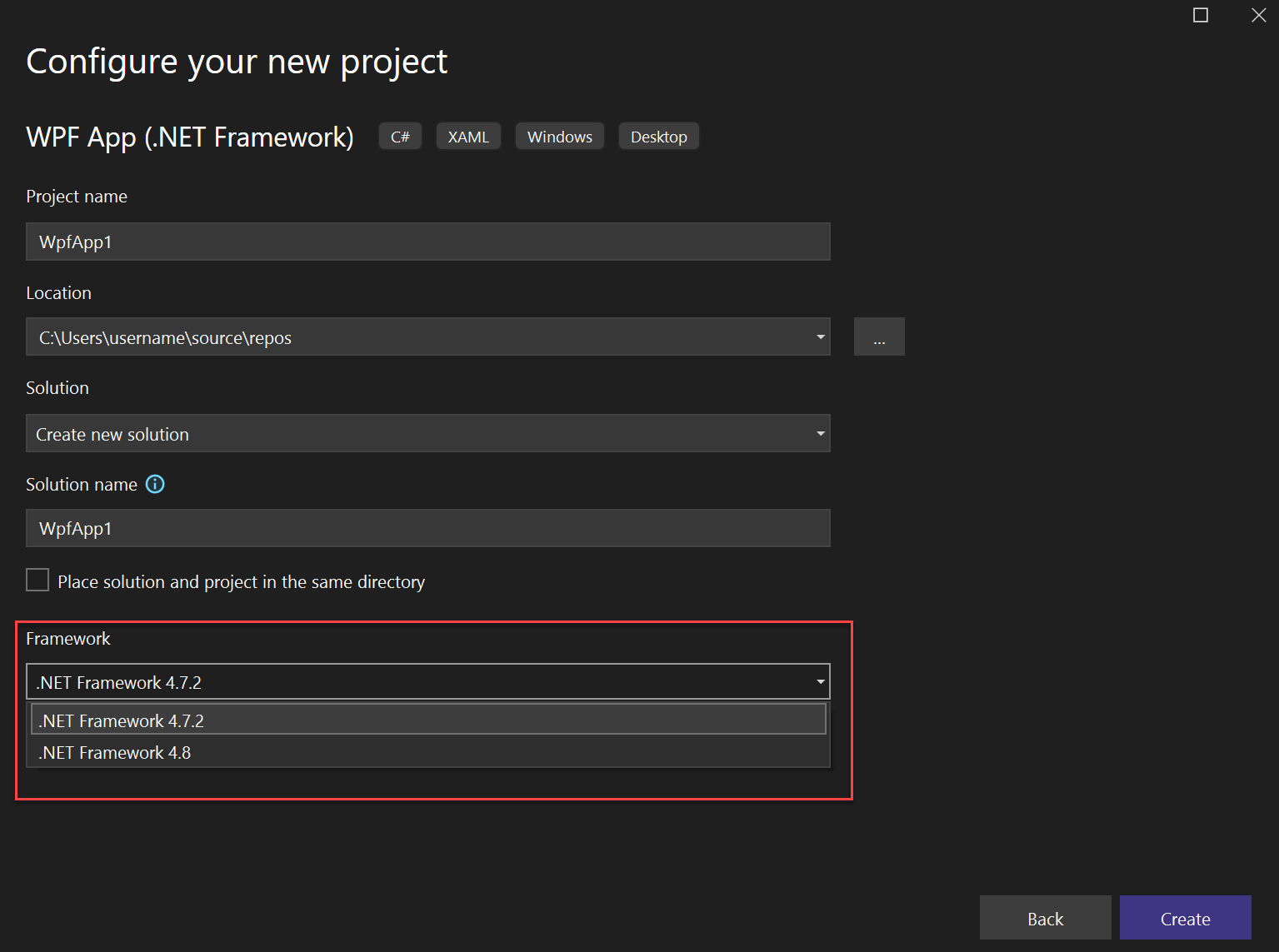
This method is particularly useful if you’re a developer or using .NET for software development.
Knowing which .NET version is on your system is key to making sure apps run smoothly and fixing any issues that pop up. If you’re dealing with multiple versions or need to uninstall .NET, tools like Aaron Stebner’s Cleanup Tool can help. Check out how to uninstall .NET Framework if you’re having trouble with that.
If you’re seeing a bunch of versions in “Add or Remove Programs,” find out how to manage multiple .NET versions.
And if you’re not sure your installation is right, try the .NET Framework Setup Verification Utility. Keeping everything updated will save you a lot of headaches down the road!





User forum
40 messages